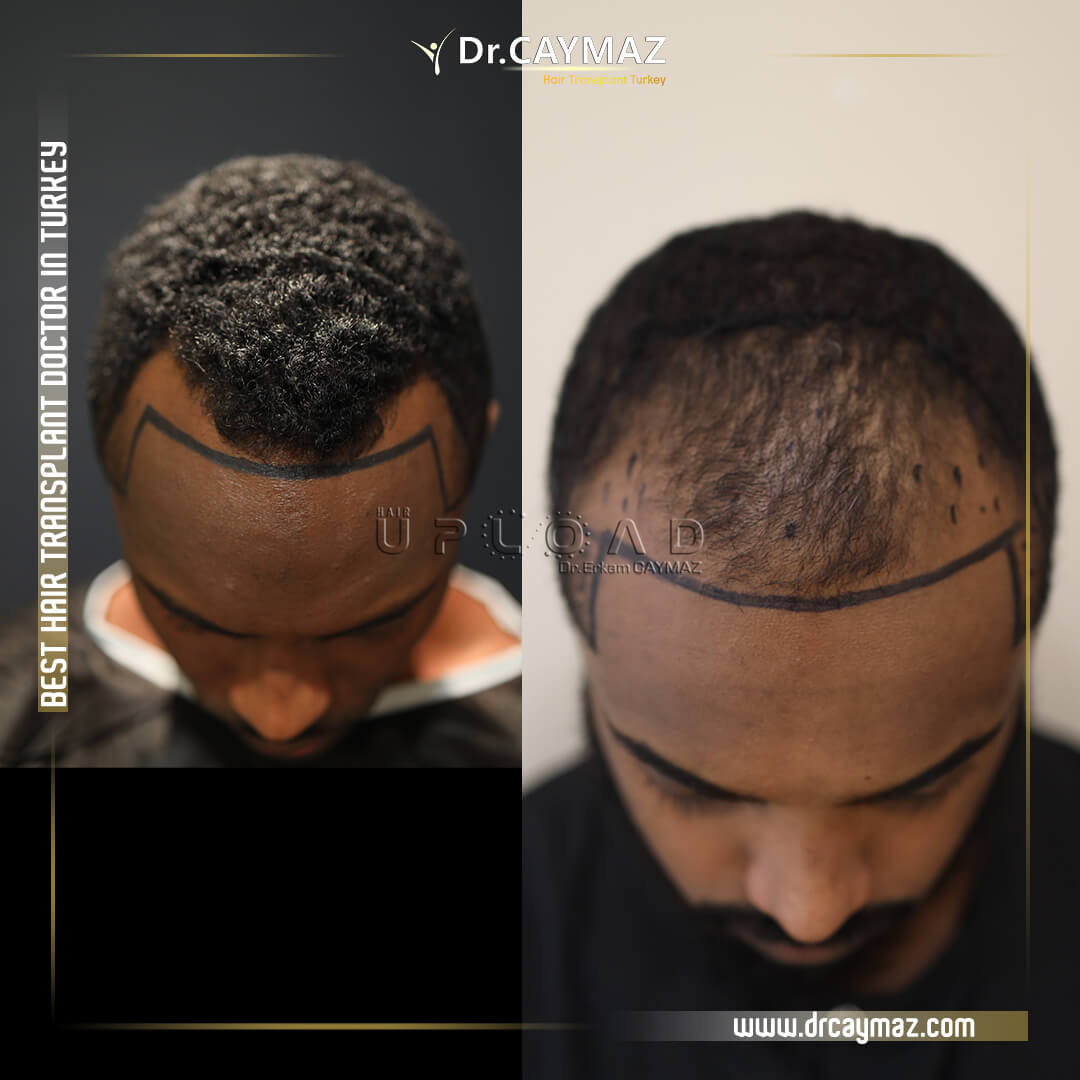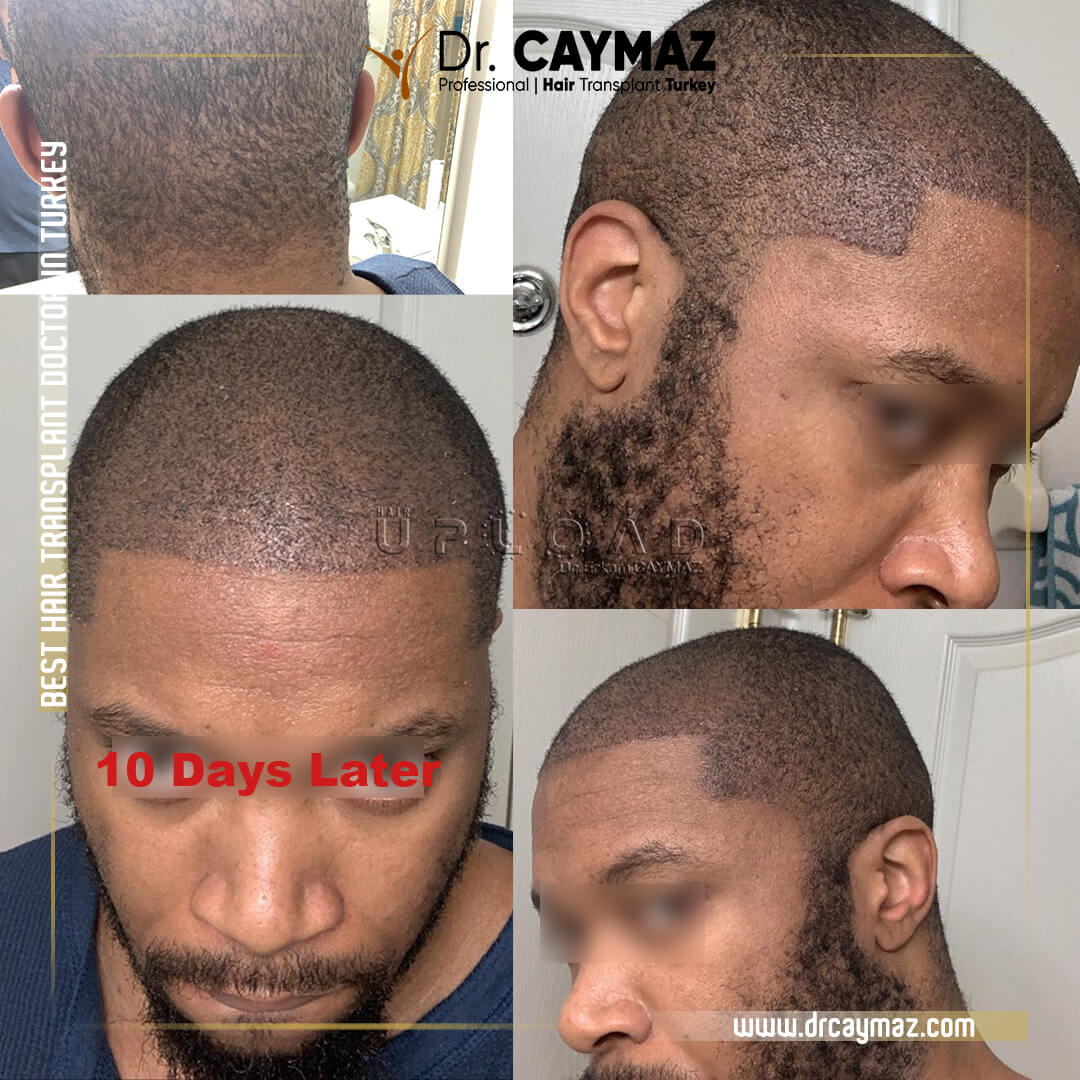Afro-American Hairline Designing
Afro-type hair is curly. Since both the hairline and the extraction of hair follicles are slightly different, it requires experience. Even the punch used to extract the grafts is of a different size.

In non-afros, hair grows according to the shape of the head, while in afro-individuals, hair grows in different directions both in the donor areas and in the frontal region. While the graft is extracted in the donor area, the person performing the operation should be experienced since the hair growth directions differ even in the two hair follicles that are next to each other. Otherwise, the hair follicles will be cut and die. Dr. Caymaz's medical team is experienced in treating both African-American and non-Afro patients.
Afro Hairline Designing
https://youtube.com/shorts/mhpRworZhKM
https://youtube.com/shorts/8ykrlMwID1w

Having straight temples and a hairline makes it look like a box or rectangle, providing a great look. When designing the afro hairline, it is important to measure it in millimeters. In particular, following the golden ratio provides more natural results. In cases such as inability to take enough grafts from the donor area or overharvest, it may be necessary not to follow the golden ratio. In these cases, it may be necessary to start slightly behind the hairline, especially if the patient has advanced baldness. If the patient wants hair to be transplanted to all bald areas, it is imperative not to follow the golden ratio. I also observe that the old hairline does not fit the golden ratio in some patients. So the golden ratio is important, but it may not be in every patient. If we have enough grafts to be taken from the donor area and these grafts are sufficient for bald areas, it is a very correct approach to follow the golden ratio.

Temples Line Design and Implantation

According to my observations, the temple length generally varies between 28 and 31 mm. The intersection point of the front hairline and temple lines is at a right angle. There should be no minimal zigzag in the front hairline. If there is minimal zigzag, even if a straight line is formed, the zigzags are noticeable when viewed closely. My preference is to act in line with the patient's wishes at this point.
Patient satisfaction matters
Patients usually describe the hairline they want in detail and show how they want it to be. Therefore, it is beneficial to make a joint decision with the patient. Dr. Caymaz draws the hairline as it should be, and when the patient gives consent, the consultation phase is completed.
It's not enough to just draw the hairline
It is very important that the surgeon who draws the hairline and the surgeon who opens the hair channels are the same in order to stick to the plan and get the desired result correctly.

Because the person who draws the hairline knows where and at what density to open the hair channels and applies the process accordingly.

Planning
At the consultation stage, after drawing the hairline, the doctor plans how many grafts will be implanted into the remaining bald areas in the morning. Doctor Caymaz, after extracting the grafts without overharvest, performs the implantation accordingly and opens the hair channels accordingly. The most important area is the frontal region.

Afro-American Hair Transplantation
Even at the temples, approximately 2000–3000 hair channels should be opened.
Implantation is performed according to how many grafts were extracted into the crown area.

* Sapphire blade : 1,5 mm for incision with Dr.CAYMAZ
* Punch Size: 0,9 mm (For Micro Fue Motor)
* Hairline designing with Dr.CAYMAZ like a "Drek" or similar.

Here, it should be considered as if a 2nd session will be needed. Therefore, overharvest is not performed so that the graft to be taken in the 2nd session remains. Because the blood circulation in the crown area is low, the need for densification may arise.

If the hair does not grow as it should as a result of a problem in the frontal region, the situation should be corrected with the second session. Patients generally do not consider the 2nd session, or most clinics say that they will not need the 2nd session. But there is always the possibility that every patient may or may not need a second session one day, and it is not possible to know or foresee this in advance. There may be many reasons for this, both acute and chronic problems such as the failure of some of the transplanted hair, stress, nutrition, circulatory disorders, and skin problems. Therefore, the idea of the second session should be kept in mind.

Conclusion
You will get good results thanks to a good and experienced surgeon and his or her team. As a footnote, it should be said that hair transplantation is easier for non-afro people than for afro people. In other words, if a surgeon is able to perform afro hair transplantation, he or she can perform hair transplantation for non-afros much more easily because afro hair transplantation requires more experience.

Afro American Hair Transplant Before After


Dr.Erkam CAYMAZ
April 2022
